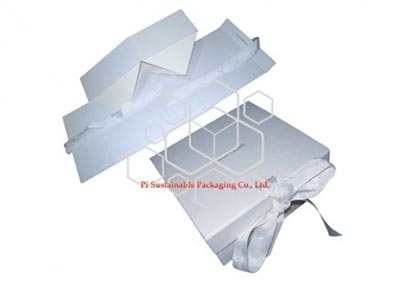Is eco-friendly packaging really eco-friendly?
Jun 05,2024 | Views: 1034
The term "eco-friendly packaging" refers to materials and designs intended to minimize environmental impact. However, whether eco-friendly packaging is genuinely eco-friendly depends on several factors:
Material Sourcing:
Renewable Resources: Packaging made from renewable resources like bamboo, cornstarch, or recycled paper can be more sustainable compared to non-renewable, petroleum-based plastics.
Recycled Content: Using recycled materials reduces the demand for virgin resources and minimizes waste.
Production Process:
Energy Consumption: The energy used to produce eco-friendly packaging should ideally come from renewable sources.
Water Usage: Manufacturing processes should minimize water usage and avoid polluting water supplies.
Transportation:
Recyclability: Packaging should be easy to recycle, and local recycling facilities should accept it.
Biodegradability: Packaging that is biodegradable or compostable can break down naturally without harming the environment.
Decomposition Conditions: Some biodegradable packaging requires specific conditions (e.g., industrial composting facilities) to decompose properly, which might not be available everywhere.
Usage Efficiency:
Durability: Packaging should protect the product effectively to avoid waste from damaged goods.
Reusability: Some packaging can be reused multiple times before disposal.
Challenges and Considerations:
Misleading Claims: Some packaging labeled as "eco-friendly" might not live up to its claims. Terms like "biodegradable" or "compostable" can be used loosely without standardized definitions.
Lifecycle Assessment: A comprehensive lifecycle assessment (LCA) is necessary to evaluate the true environmental impact of packaging, from raw material extraction to end-of-life disposal.
Consumer Behavior: Proper disposal by consumers is crucial. For instance, biodegradable packaging ending up in a landfill might not decompose as intended due to the lack of oxygen.
Examples:
PLA (Polylactic Acid): A plant-based plastic that is compostable in industrial facilities but might not break down in home composting.
Mushroom Packaging: Made from agricultural waste and mycelium, it's fully biodegradable and can be composted at home.
Paper and Cardboard: Often recyclable, but the environmental impact depends on the sourcing of raw materials and the recycling process.
Eco-friendly packaging can be a more sustainable choice, but its true environmental benefit depends on multiple factors, including material choice, production methods, disposal options, and consumer behavior. It's essential to look beyond labels and consider the full lifecycle and practicalities of recycling and composting.
Prev: What is the best packaging for chocolate?
Next: How to package your handmade jewelry?
Material Sourcing:
Renewable Resources: Packaging made from renewable resources like bamboo, cornstarch, or recycled paper can be more sustainable compared to non-renewable, petroleum-based plastics.
Recycled Content: Using recycled materials reduces the demand for virgin resources and minimizes waste.
Production Process:
Energy Consumption: The energy used to produce eco-friendly packaging should ideally come from renewable sources.
Water Usage: Manufacturing processes should minimize water usage and avoid polluting water supplies.
Transportation:
Weight and Volume: Lighter and more compact packaging reduces the carbon footprint associated with transportation.
Recyclability: Packaging should be easy to recycle, and local recycling facilities should accept it.
Biodegradability: Packaging that is biodegradable or compostable can break down naturally without harming the environment.
Decomposition Conditions: Some biodegradable packaging requires specific conditions (e.g., industrial composting facilities) to decompose properly, which might not be available everywhere.
Usage Efficiency:
Durability: Packaging should protect the product effectively to avoid waste from damaged goods.
Reusability: Some packaging can be reused multiple times before disposal.
Challenges and Considerations:
Misleading Claims: Some packaging labeled as "eco-friendly" might not live up to its claims. Terms like "biodegradable" or "compostable" can be used loosely without standardized definitions.
Lifecycle Assessment: A comprehensive lifecycle assessment (LCA) is necessary to evaluate the true environmental impact of packaging, from raw material extraction to end-of-life disposal.
Consumer Behavior: Proper disposal by consumers is crucial. For instance, biodegradable packaging ending up in a landfill might not decompose as intended due to the lack of oxygen.
Examples:
PLA (Polylactic Acid): A plant-based plastic that is compostable in industrial facilities but might not break down in home composting.
Mushroom Packaging: Made from agricultural waste and mycelium, it's fully biodegradable and can be composted at home.
Paper and Cardboard: Often recyclable, but the environmental impact depends on the sourcing of raw materials and the recycling process.
Eco-friendly packaging can be a more sustainable choice, but its true environmental benefit depends on multiple factors, including material choice, production methods, disposal options, and consumer behavior. It's essential to look beyond labels and consider the full lifecycle and practicalities of recycling and composting.

 English
English 日本語
日本語 Français
Français Deutsch
Deutsch Español
Español
